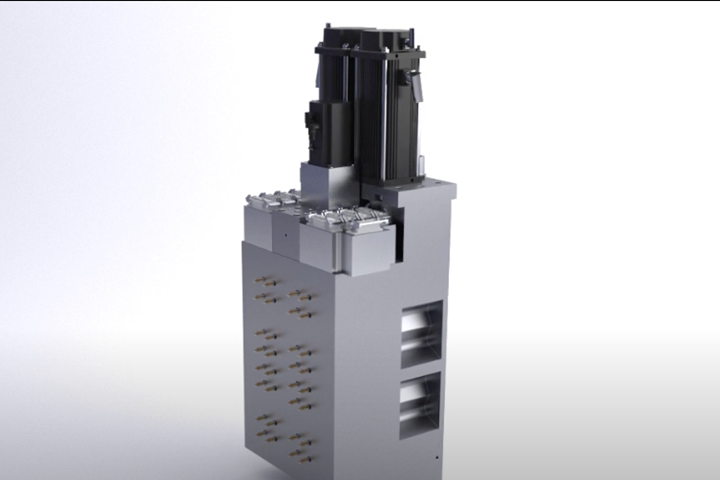New Melt Delivery and Control System Enables Design Freedom
Husky says its UltraShot Injection System liberates part design from the requirements of the injection molding process so that parts completed with other processes or post-mold assembly can now be produced in a single injection molding cycle.
Husky’s new UltraShot Injection System pressurizes the resin near the cavities, reducing the influence of resin compressibility and shear, as well as thermal variations, on balance and part quality. This is different from a traditional hot runner where melt injection is decoupled from melt preparation. The company says the discrete injection circuit design is scalable up to 128 cavities, and that it overcomes traditional constraints of pressure, L/T (flow ratio) and difficult-to-mold resins. This further enables lightweighting, process time savings and greater flexibility in resin selection.
Husky says that compared to conventional hot runners, melt in the UltraShot Injection System experiences fewer high-pressure injection cycles, thus preserving the original resin properties. Lowering molded-in stress leads to better mechanical and optical properties in the molded part.
Part of that is due to the fact that Ultrashot technology utilizes precise, servo-controlled melt injection near the cavity. The resulting shorter flow length enables higher injection melt pressure and better control, since injection pressure is not reduced by compressibility in long melt channels. The technology is controlled by Husky’s Altanium mold controller offering integrated process control and monitoring.

Husky’s UltraShot Injection System is scalable up to 128 cavities.
Related Content
-
How to Optimize Pack & Hold Times for Hot-Runner & Valve-Gated Molds
Applying a scientific method to what is typically a trial-and-error process. Part 2 of 2.
-
Why Shoulder Bolts Are Too Important to Ignore (Part 2)
Follow these tips and tricks for a better design.
-
Hot Runners: How to Maintain Heaters, Thermocouples, and Controls
I conclude this three-part examination of real-world problems and solutions involving hot runners by focusing on heaters, thermocouples, and controls. Part 3 of 3.












